How well do you know your customers?
It’s certainly a tough thing to evaluate.
Luckily, one fantastic tool we have in our arsenal for creating happy customers is research in social psychology. We also have data on company-customer interaction.
With these insights into the human mind and research studies on customer loyalty, we can more objectively approach questions like, “What makes a happy customer?”
Today, I’d like to discuss 10 such studies that reveal 10 things your customers WISH you knew about them.
Let’s get started…
Note: If you’re a visual learner, check out the infographic version of this post.
1. Customers Care More about Service Quality and Attitude than about Service Speed
When it comes to customer service, we all want to “get out” quickly and get back to our lives. Generally speaking, just about the only time customers are going to contact you is when they need help, so speed counts in getting them where they’d like to be.
A recent Gallup study reveals that when it comes to memorable service people tell their friends about, it’s more important that the service provided feels “thorough” and friendly, rather than quick. This was especially true for service in premium or prestigious markets, such as customer support at a bank.
Not only that, in a Customer Experience Report by RightNow, researchers found that the #1 reason customers would abandon a brand was due to poor quality and rude customer service, which were cited 18% more often than “slow or untimely service.”
The results seem clear: Good service trumps fast service every time, in both customer retention and satisfaction.
It’s important that your business (and those you hire) focus on providing memorable, competent, and knowledgeable service with a smile.
Timely service is important, but customers are much more likely to remember brands that went above and beyond to solve their problems over brands that got them out the door quickly.
2. Customers Know What They (and Other Customers) Want; They’re also Willing to Help
There are certain things that customers are just flat out better at than you, and one of the things they can be quite good at is understanding their peers’ needs.
To quote Steve Jobs:
It can be really hard to design products by focus groups.
A lot of times, people don’t know what they want until you show it to them.
This is certainly true in some instances, as it can be rewarding for brands to give their customers things they didn’t know they needed before they even ask (iPod anyone?).
Research says customers DO know what they want in many situations.
In fact, a study from the Institute of Management Sciences (headed by MIT’s Eric von Hippel) paints a very interesting picture of just how important customer input is in the success of many businesses.
The crucial conclusions of the study were as follows:
- In a study of 1,193 commercially successful innovations across nine industries, 737 (60%) came from customers (i.e., customers can have very innovative ideas).
- User-created innovations have been successfully utilized to turn around “innovative slump periods.”
While #1 is certainly a shocking revelation, there is a unique case study for #2 that really paints a believable picture for just how valuable customer input is.
The example comes to us from 3M (a huge multinational conglomerate). 3M’s poorly performing Medical-Surgical Markets Division was looking for a way to kick start its lackluster innovation record in the 90s.
Instead of taking the standard route (relying on internal, employee backed ideas), a separate team was formed to search for breakthrough innovation that consisted of the “lead users” (read: customers).
When the results of these two groups (users vs. employees) were compared side-by-side in terms of revenue generated, the differences were quite drastic:
- User-lead innovations had an average revenue of $146 million dollars (in 5 years).
- Internally generated innovations had an average revenue of $18 million (for the same span of time).
The results were clear: Customers were coming up with the winning ideas more often than not.
Be sure to utilize your customers to their fullest potential in your business: Customer surveys and analyzing customer feedback should be an integral part of your research.
3. Customers like Loyalty Programs… as Long as You Make Them Seem Easy
For years companies have been striving to create customer loyalty programs that stick; and recently, interesting research by two social psychologists finally reveals a way to make it happen.
Consumer researchers, Joseph Nunes and Xavier Dreze, have made some startling findings on customer reward programs.
The critical findings of their research can be summed up as follows:
- Customers like reward programs but are much more likely to participate if the business in question utilizes “artificial advancement.”
- In a truly interesting look into human nature, people like being part of “gold” and “premium” reward groups… but only if there is a group of people below them.
Let’s break these down, shall we?
For #1, it’s essential that we understand just what “artificial advancement” really means.
In their research on the Endowed Progress Effect, Nunes and Dreze tested two versions of a car-wash loyalty program, which consisted of a card that got stamped after every wash.
The first card needed 8 stamps to get a free wash.
The second card needed 10 stamps to get a free wash, but 2 stamps were automatically added when the customer joined.
That means both cards took 8 stamps total to get a free wash; they were just framed differently. Which one do you think performed better?
Their findings: Despite the similar process, the second card performed almost twice as well as the first card, having 34 percent of participants complete it versus 19 percent for the other card.
Why is this important?
It shows that customers are more likely to stick with loyalty programs if the task at hand is framed as already being started.
Beginning a new task is a point where our brains often try to sabotage us, and additional research has shown that we are much more likely to complete a task if we feel like we’ve already taken the first few steps. This “artificial advancement” used on the second card was what made customers more likely to complete the card program to the end.
Last but not least, Nunes did a separate study on reward levels within customer loyalty programs and found that customers are even MORE loyal if they are labeled within a “gold club,” but only if there is another level below them.
The takeaway?
Customers will embrace loyalty programs if you can make them feel like they aren’t a “new task” to perform, but a task that’s already begun. They also like being part of different levels and will strive to be in a “gold club”… but only if there are levels below them.
4. Creating Goodwill with Customers Doesn’t Take a Lot of Money
In the customer service world, there is a thing I like to call “Frugal WOWs” that sums up what it means to be completely blown away by a seemingly small but very thoughtful action.
Check out this video on a memorable customer service experience from popular customer service speaker/trainer, Ross Shafer:
Mr. Shafer mentions that he brings up this story almost every time he speaks: Quite an ROI for a simple can of Coca-Cola! (Watch the video to find out.)
Let’s take another example, this one coming from Fred Reichheld, a Fellow at the management consultancy firm Bain & Company:
One of my favorite examples of this happened at Rackspace, the managed hosting and cloud computing company.
An employee on the phone with a customer during a marathon troubleshooting session heard the customer tell someone in the background that they were getting hungry.
“So I put them on hold, and I ordered them a pizza. About 30 minutes later, we were still on the phone, and there was a knock on their door. I told them to go answer it because it was pizza! They were so excited.”
What’s actually happening: While the cost of the gifts/actions is quite small, the human mind simply cannot refuse the psychological construct of reciprocity.
Reciprocity can be summed up as our natural inclination to feel grateful for favors and our desire to “pay them back,” no matter how small they are (covered quite well by Cialdini in his famous book Influence).
The other thing that you must understand about reciprocity is that research has shown us that the intentions of the “giver” can affect the perceived value of the gift.
This is why “Frugal WOWs” work so well: Customers perceive the service as a genuine act of kindness rather than as you trying to buy their affection with costly gifts.
So remember, it doesn’t take huge expenses to win customers over!
5. Customers Absolutely Adore Personalization; They Will Gladly Pay More for It
Would you believe that waiters were able to increase their tips by 23% over a control group by utilizing something as inexpensive as mints?
It’s true, and this research is not only important in helping you understand how to create repeat customers, but also how to keep your customers incredibly satisfied and supportive of your business offering.
It’s the process of personalization, and it’s incredibly powerful:
In a study published in the Journal of Applied Social Psychology, researchers tested the effects that mints had against a control group (where no mints were given) in order to measure their effectiveness in increasing tips.
The results were surprising to say the least:
- The first group studied had waiters giving mints along with the check, making no mention of the mints themselves. This increased tips by around 3% against the control group.
- The second group had waiters bring out two mints by hand (separate from the check), and they mentioned them to the table (i.e., “Would anyone like some mints before they leave?”). This saw tips increase by about 14% against the control group.
- The last group had waiters bring out the check first along with a few mints. A short time afterward, the waiters came back with another set of mints and let customers know they had brought out more mints, in case they wanted another.
That last group is where waiters saw a 21% increase in tips… yet they still were bringing out only two mints.
The researchers found that it was the perceived personalization of bringing out the second set of mints and mentioning it to customers (“Hey, I thought I might see if all of you are satisfied or if someone could use an extra mint.”) that made the difference.
Point being: It wasn’t really the mints; it was the personalized experience that they created. It made it perfectly clear to customers that the waiter was thinking of them.
Be sure to incorporate this into your own offering: How can you follow up with customers in a personalized manner with free support, training, or reward for trying out your product or service?
6. Your Customers Love Stories and Are More Open to Your Business Selling through Them
If you want to persuade your customers and create a memorable experience at the same time, you must master the psychology of storytelling.
Research lead by Melanie Green and Timothy Brock reveals that trying to persuade people by telling them stories works extremely well.
The reason that stories (when told well) are so appealing to customers is that you can transport them inside the story and get your point across without directly selling.
Researcher Jeremy Dean (founder of PsyBlog) notes the following on the effectiveness of stories:
Once inside the story, we are less likely to notice things which don’t match up with our everyday experience.
For example, an inspirational Hollywood movie with a “can-do” spirit might convince us that we can tackle any problem, despite what we know about how the real world works.
Also, when concentrating on a story, people are less aware that they are subject to a persuasion attempt: The message gets in under the radar.
Our brains have a tendency to be mostly concerned with enjoying the story and absorbing the message.
Stories can be incorporated effectively in this way by utilizing them in your content marketing efforts, especially if you use case studies and interviews to tell your tales and do your selling for you.
For instance, over at Help Scout, I conducted an interview with Leo Wildrich of the BufferApp that discussed how a small team like Buffer’s could possibly handle email support with tens of thousands of customers.
The tale of a small team dealing with mountains of support emails was definitely one that resonated with a lot of small business owners, and the post was quite popular and performed well, all without the “hard-sell.”
7. Customers Will Remember Your Business If You Can Remember Their Names
What’s the sweetest sound that can flutter into your ears?
According to recent research studying brain activation, “Your Name” is a very good guess.
Everyone loves hearing their own name!
The implications of this have been seen across a variety of situations in dealing with customers:
- People tend to like you more if you use their name a few times during conversations. (But there is a limit; saying their name too much becomes unnatural and insincere.)
- People open emails with more consistency if their name is included. (That’s a big reason to ask for a name if you want increased conversions via email.)
- People often assume you are more competent if you know their name; it’s a big part of their identity, and if you recall it and use it, you are instantly viewed in a better light in their eyes.
Utilizing customer names when interacting with them directly is an important part of making people feel like individuals rather than a “support ticket.”
It’s difficult to scale, but if you care about your customers, it’s an essential part of winning them over.
There’s quite a difference between receiving an automated email from “DO-NOT-REPLY” versus receiving one from “Scott” saying, “Hey Greg, thank you for your purchase! :)”
Always keep that in mind!
8. It Pays to Surprise Your Customers: You Don’t Need to Trumpet Every Benefit
Want to know one of the most effective ways to create reciprocity with your customers?
Surprise them!
People like getting things for free and like them even more when they are viewed as “favors,” but they love receiving these favors as surprises.
For instance, did you know that Zappos automatically upgrades all purchases to priority shipping… without so much as even a mention on the sales or checkout page?
Why offer this sort of benefit without mentioning it?
Simple: A company like Zappos (known for their legendary customer service) recognizes the benefits of surprising people with a next day delivery. That’s not even mentioning the fact that this shipping creates immense goodwill between Zappos and their first time buyers. (I still remember my first order.)
That kind of reciprocity is justified by almost any cost, and the hit Zappos takes by doing this is paid back multiple times over by the customer loyalty they generate from making people happy.
9. Selling “Time” over Savings Can put Your Customers in a Better Buying Mood
Have you ever wondered why commercials for “cheap beer” never, ever focus on the money that you can save by buying them?
Instead, they create ads and slogans that focus on having a great time (i.e., “It’s Miller Time!”)
This isn’t an accident.
As it turns out, new research from Stanford reveals that selling “time” over money can make customers more receptive to buying.
From Aaker’s research:
“Ultimately, time is a more scarce resource—once it’s gone, it’s gone—and therefore more meaningful to us,” says Mogilner.
“How we spend our time says so much more about who we are than how we spend our money.”
Getting people to think about a period of time they enjoyed (associated with a product) can be much more effective than reminding them that they could be saving money.
Speaking of money…
10. Bringing up Savings Makes Customers Feel Self-Centered and Greedy
Psychologist Kathleen Vohs has done numerous studies on priming, specifically in terms of how it affects our perception of money.
She found through her research that just thinking about money makes us more self-serving and less willing to help others:
Two sets of subjects were “primed” with either cues related to money (money related images, essays about making money) or cues that were unrelated to money. Later, subjects were asked to solve a difficult “brain-buster” and to help others do the same (those others being people “in” on the study).
Her findings were quite revealing:
Subjects primed with money-related cues took 70% longer to ask for help on the puzzle; and when giving help, spent 50% less time helping others.
These money-primed subjects also preferred to work alone while doing the problem and were far more solitary (sat alone, conversed less).
What are the implications of these findings?
Getting people to think about money and having them enter this “selfish” state can be beneficial or disastrous in advertising benefits to customers. If you’re selling an item associated with luxury or prosperity, this mindset may be a good thing (advertising your mutual fund, financial/retirement services, etc.).
Here’s where things could go wrong:
Would it be wise to advertise money, spending, and saving when selling “gifts for mom” on mother’s day?
Roger Dooley, author of Brainfluence, had this to say:
[Marketers] who should be particularly cautious about money cues are those who want to appeal to the viewer’s feelings about others.
Filling viewers with feelings of warmth and a desire to please someone else… and then reminding them about money, could be self-defeating.
Vohs agrees, citing research that shows how money often creates conflict and stress when paired with family issues, due to conflicting interests (Burroughs and Rindfleisch, 2002).
The lesson: Be wary of reminding your customers about money if your product isn’t related to serving self-interests.
Over to You…
Whew, that was a long post to read, with a ton of research, so let me just take the time to say thank you for reading! I mean it. 🙂
Now I hand things over to you…
- Let me know in the comments what the best service you ever received was, and why you remember that service to this day.
- On the flip-side, tell me a story about the worst customer service you received and what made you frustrated.
- If you are interested in knowing even more data about your customers, feel free to check out our free e-Book on 75 Customer Service Facts, Quotes & Statistics to get your fill!
I’ll see you in the comments!
About the Author: Gregory Ciotti is the marketing guy at Help Scout, the customer service software that allows teams to deliver superb email support with a personal touch. Get more from Greg on the Help Scout blog or on his site Sparring Mind.
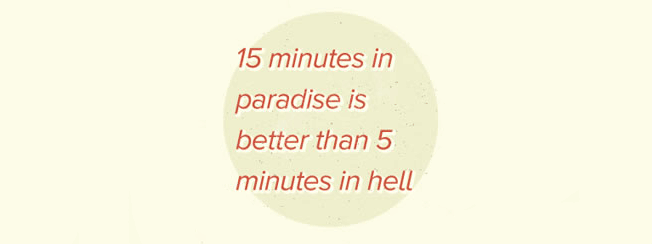

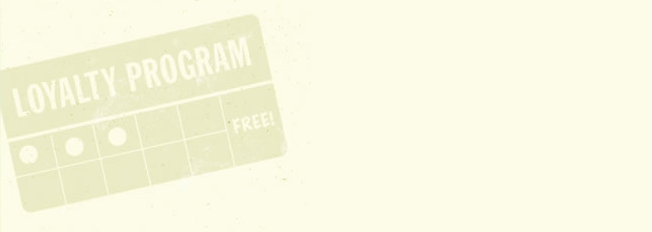
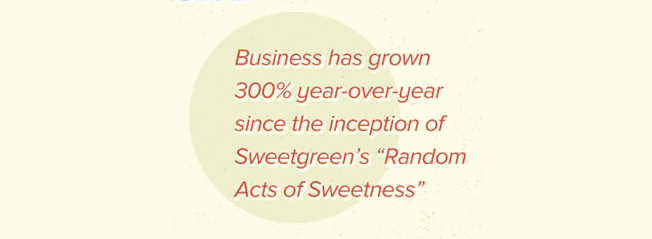

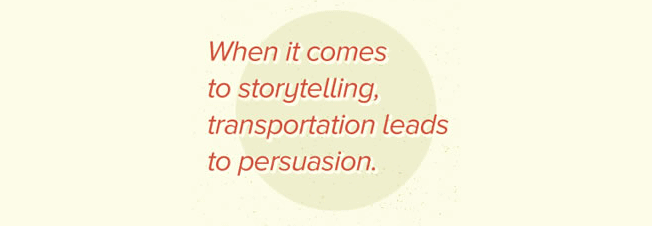
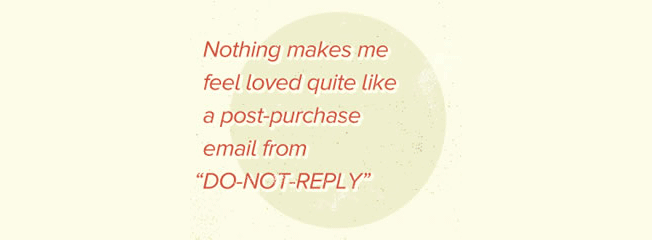

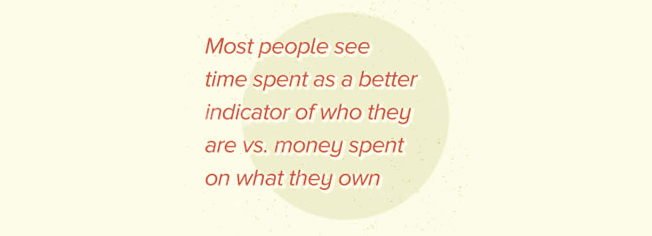

Comments (15)